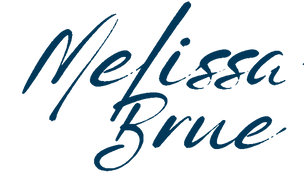Is It Supposed to Get Easier?
Lessons From 16 Years in Business
What if the hardest year of business… wasn’t your first — or even your first five?
They say if you can survive five years, you’re golden. I’m not exactly sure who they are... but I’ve definitely heard it.
And after sixteen years, I can tell you — that first year? It wasn’t the hardest. Not even close. But before we get into why, let me give you the backstory.
How It Started
In 2008, my husband changed careers and we needed extra income.So I started baking and selling at farmers markets — just a seasonal situation — enough to support our family.
It wasn’t meant to be permanent.
It wasn’t meant to grow into anything.
But three years in, I looked up and realized: This isn’t a side hustle.
This is a business.
And I’ll be honest: I thought it would get easier.
Building Around Real Life
I didn’t start my bakery with a business plan or a big dream. I started it because we needed to make ends meet. Those early years were slow — on purpose. My kids were little. I worked nights while they slept and during school hours. I built the bakery around my life, not the other way around. By year three, I realized this thing had legs — and that my community depended on it. Now it’s 2025. And sixteen years in, I can say with full honesty: I thought it would be easier by now.
The Myth of the “Hard First Year”
Like a lot of us, I believed the myth: If you can just survive the startup phase, things will level out.
But that’s not how it works. Let’s look at what really happens:
Year 2–3: The novelty wears off. Operational challenges hit hard.
Year 5: Burnout is real. This is the “grow or close” phase.
Year 10+: Only the businesses that adapt, reinvent, and lead with intention survive.
Surviving doesn’t mean coasting.
It means continuing to evolve — even when it’s hard.
Redefining Striving
I love the word striving — but not in a hustle culture way.
I mean striving in the sense of becoming.
Of showing up, leading well, and building something meaningful.
Customer attrition is real. People move, habits shift, life happens.
Even if all you want is to maintain — you still have to innovate.
You still have to show up, reach out, and invite people in.
New Level, New Devil
Ed Mylett says: “New level, new devil.”
What you don’t know at $100K looks different from what you don’t know at $500K or $1M.
Each stage demands a different version of you — and a different set of systems.
That’s why community matters.
You need a coach.
You need a mentor.
You need people in your industry — and outside of it — who are where you want to be.
People who’ve been a few steps ahead.
People who get it.
The Past Five Years: A Masterclass in Adaptation
Let’s talk about 2020 to 2025.
It’s been a masterclass in pivots and resilience.
Honestly, it brings to mind that Friends episode — the one where Ross is yelling “PIVOT!” while trying to move a couch up the stairs. (And if you’ve never seen the blooper reel for that one, do yourself a favor.)
Anyway. Back to the point. The past five years have been wild.
A global pandemic
Shutdowns
Lost farmers market revenue
Wholesale accounts cut in half
We pivoted fast — parking lot pickups, direct delivery — and somehow, 2020 became our best year ever.
And every year since? Still growing — at least 20% year over year.
But It Didn’t Stop There
Then came:
Supply chain chaos
Vendor closures
Packaging and ingredient shortages
Our chai supplier couldn’t get bottles.
Our bag vendor couldn’t get the right film.
We couldn’t get the basics.
And then Oregon passed new cage-free egg legislation in 2024.
Not long after, the egg crisis hit.
A case of eggs went from $40 to $150 — nearly $1 per egg. For a bakery, that’s no small thing.
And then? Tariffs.
Which always trickle down — from importer, to supplier, to small business, to customer.
So No, It Hasn’t Gotten Easier
But here’s what has changed:
I’ve grown stronger.
More resilient.
More rooted in who we are and how we respond.
That’s the work.
Not chasing ease — but building capacity.
Playing the long game.
Running a business that bends with the market, flexes with the economy, and still stands firm in its values.
What I’ve Learned After 16 Years
Business doesn’t necessarily get easier — but it does become more intentional.
Each stage brings its own challenges, but with time and purposeful striving, you gain something more valuable than ease:
Clarity. Adaptability. A deeper connection to your why.
It’s not about reaching a place where everything is effortless.
It’s about becoming the kind of leader who meets what comes with wisdom — and stays aligned through change.
In Case You Need the Reminder…
If you’re in a season where it feels like it should be easier by now — you’re not alone.
Growth isn’t linear.
And the goal isn’t ease.
It’s clarity. Strength.
The ability to adapt without losing what matters most.
After sixteen years, that’s what I’ve learned to chase:
Not perfection.
Not hustle.
Not ease.
But alignment.
Wherever you are in your journey — early, mid, or decades in — I hope this reminds you:
Hard doesn’t mean you’re failing.
It just means you’re still in it.
And still growing.
